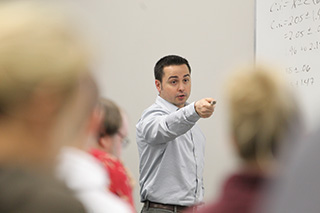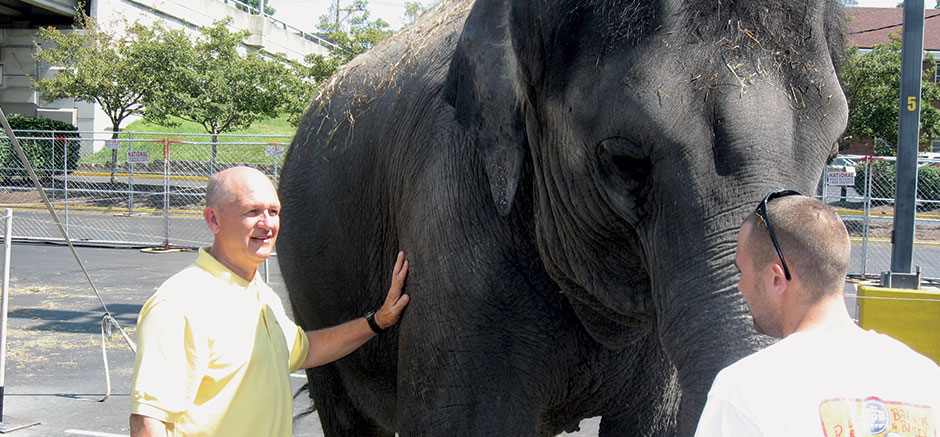Archive for the ‘Uncategorized’ category
Studying civic engagement in Missouri
Using the community as a laboratory for his research, Stout, along with colleagues Drs. John Harms and Tim Knapp, conducted a series of community assessments investigating how social connectedness, membership in voluntary associations and participation in the community are related to economic opportunity.
 “We want to inform policy … if we can weave together a civic infrastructure that is more inclusive, then more people will be empowered to have a voice in the future of their communities and their own lives,” Stout said.
“We want to inform policy … if we can weave together a civic infrastructure that is more inclusive, then more people will be empowered to have a voice in the future of their communities and their own lives,” Stout said.
The group also initiated a research project examining social capital and citizen participation in southwest Missouri.
They found that people in the region tend to have many interpersonal connections, high levels of participation in voluntary groups (especially faith-based organizations) and high levels of trust in others. However, their study revealed lower levels of civic engagement compared to the national average.
In 2010, Stout, Harms and Knapp completed the first-ever State Civic Health Assessment and they are now working on the second.
More recently, the team collaborated in the Neighbor for Neighbor initiative to bridge gaps between diverse populations within neighborhoods affected by economic hardships.
“The idea is to use small incremental changes to build trust, to increase social connectedness, and to empower people to work together to solve problems,” said Stout.

Working with endangered Asian elephants
Schmitt has worked with elephants for more than 30 years. In addition to his role at Missouri State, he serves as the chair of veterinary services and director of research and conservation at the Ringling Bros. and Barnum & Bailey Center for Elephant Conservation. In this capacity, he oversees the care of about 50 elephants for Ringling Bros.
Although elephants are smart, charismatic animals, they can come into conflict with humans.
“In attempts to keep elephants from damaging their crops and property, people come into direct conflict with elephants,” Schmitt said. “Sometimes the elephants win; sometimes people win.”
Due to this conflict and an aging elephant population, Schmitt’s work with breeding has become even more important. In 1999, Schmitt became the first researcher to produce an elephant from artificial insemination.
Since then, he has been at the births of about 20 elephants that were the result of artificial insemination.
“Artificial insemination allows us to provide genetic diversity by breeding (females) with unrelated males,” Schmitt said. “It gives facilities the opportunity to repopulate endangered species without having the housing for the males at the time.”
Schmitt added that if facilities are going to participate in breeding programs, they are required to have the space to house the males as they grow up. According to Schmitt, space won’t be a problem in several years as the aging elephant population is nonreproductive with the average lifespan in the upper 40s.
According to Schmitt, one way people can help these animals is to simply learn more about elephants.

Exploring how humans interact with computers
Working with an international group of human/computer interaction researchers, Brahnam has published widely and performed several studies that investigate the extent of agent abuse. In addition, she has examined agent abuse as an ethical issue and has proposed methods for designing agents so they are less likely to elicit these negative responses from users.
Brahnam uses her technology expertise in multiple other research projects — one of the primary areas being medical decision support systems.
An example of her contribution in this field is the development of the pilot Infant COPE (Classification of Pain Expressions) database and evaluation protocols, which includes 204 photographs collected of 26 healthy term infants.
The infants were photographed at Mercy Hospital in the neonatal unit while they were experiencing a number of benign nonpain stressors and an acute pain stimulus (the heel lance needed for the state-mandated blood exam).
This study was the first to investigate automatic neonatal pain detection using facial expressions.
Writing about British culture in the Nuclear age
Dr. Catherine Jolivette, associate professor of art and design at Missouri State University, will soon release a new book, “British Art in the Nuclear Age” (Ashgate, 2014), which addresses the role of art and culture in the realm of nuclear science and technology, atomic power and nuclear warfare in Cold War Britain.
“Researching for this book really brought to light that there was no one homogenized response to living in the atomic age. Past historians have had a tendency to generalize about everybody living under a cloud of anxiety and fear,” Jolivette said.
The book, which is a collection of nine original essays by international colleagues in a number of disciplines, builds upon her previous book on landscape and art in Britain in the 1950s that only touched briefly on how changes in science and technology were perceived by British artists during the mid-20th century.
“It’s not just about militarism or nuclear weapons. It was also about the hopes and potential of science for good, and holding those two things in balance,” Jolivette said.
Being British herself, she is excited to be part of the landscape of this part of art history.
She finds inspiration in engaging in dialogues with colleagues outside of her discipline at conferences, and is currently collaborating with a group of other scholars on finding funding for a mobile application related to their collective research.

Improving literacy in children
It is taught early and tested often, and it is a lifetime skill that should be expanded to improve comprehension in daily life.
Although children often enter school with a basic grasp of reading and language, educators must be prepared to engage students to improve these skills.
Dr. Deanne Camp, professor of reading, foundations and technology and the graduate literacy program coordinator at Missouri State, understands the challenges of reading instruction and prepares educators for overcoming them.
Her primary research areas include literacy development, comprehension and struggling readers.
She has authored and co-authored approximately 10 journal articles or book chapters in the last three years, tackling topics like the importance of reading aloud, teaching study skills and developing writing lessons for early elementary school.

Keeping grape populations healthy
Here, researchers like Dr. Wenping Qiu, director, and Dr. Chin-Feng Hwang, associate professor at the William H. Darr School of Agriculture, explore grape genetics. They want to increase the profitability of the grape and wine industry, ensure its stability and improve human health with their genetic findings.
One of the primary grapes studied at the center is Missouri’s official state grape, the Norton — which is grown at the State Fruit Experiment Station on the Mountain Grove campus. The researchers study disease resistance in order to keep the plants healthy.
“Norton, (scientific name Vitis aestivalis), the official grape of the state of Missouri, is grown in many U.S. regions where production of V. vinifera (the European grape used for most wine-making worldwide, e.g., pinot noir) requires extensive pesticide use for fungal diseases,” Hwang said. “It has been reported that Norton is hardy and resistant to several fungal pathogens including powdery mildew, downy mildew, Botrytis bunch rot and black rot.”
With some of the most recent findings, the research team hopes to expedite efforts to breed the Norton grape with the ultimate goal of improving viticultural performance and enological quality of new grape varieties well-adapted to Missouri conditions.
Sharing the healing power of art
Since becoming a registered art therapist in 1987, she has hosted a variety of workshops and researched art therapy for children in pediatric oncology units and patients who are terminally ill.
Knowing the importance of art in life, especially in the lives of children, she organized efforts to donate more than 150 boxes of art supplies and 75 boxes of craft supplies to communities affected by hurricanes Katrina and Rita. That’s when she founded Art on Wheels-Missouri, which later came to the aid of the community of Joplin — where Fowler raised her family — after the town was ravaged by a tornado in May 2011.
“When we worked with the kids after the Joplin tornado, we’d often have a group process where we’d all draw people…and we did look at how they responded,” she said. “When I saw the children’s work, I could tell by the colors they use, by the way they worked … and what they omit, what they were experiencing.”
When they see work with hard scribbling, torn-apart imagery and/or the use of dark colors, a therapist might deduce that a child was experiencing anxiety, Fowler said. One common theme children drew after the tornado was butterflies. Although no one can be sure why these showed up in so many drawings in the aftermath, it is an area that has intrigued Fowler and she plans to do further research.

